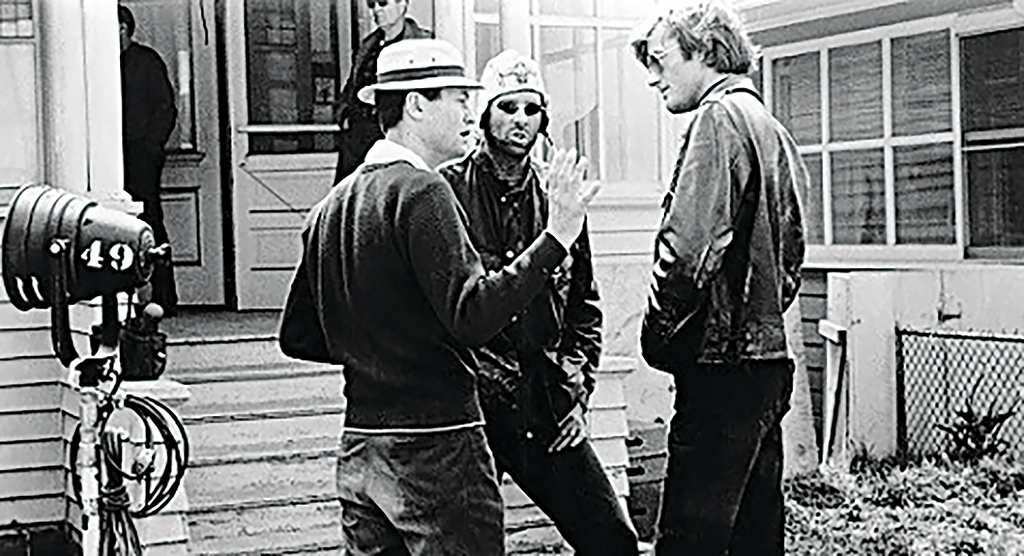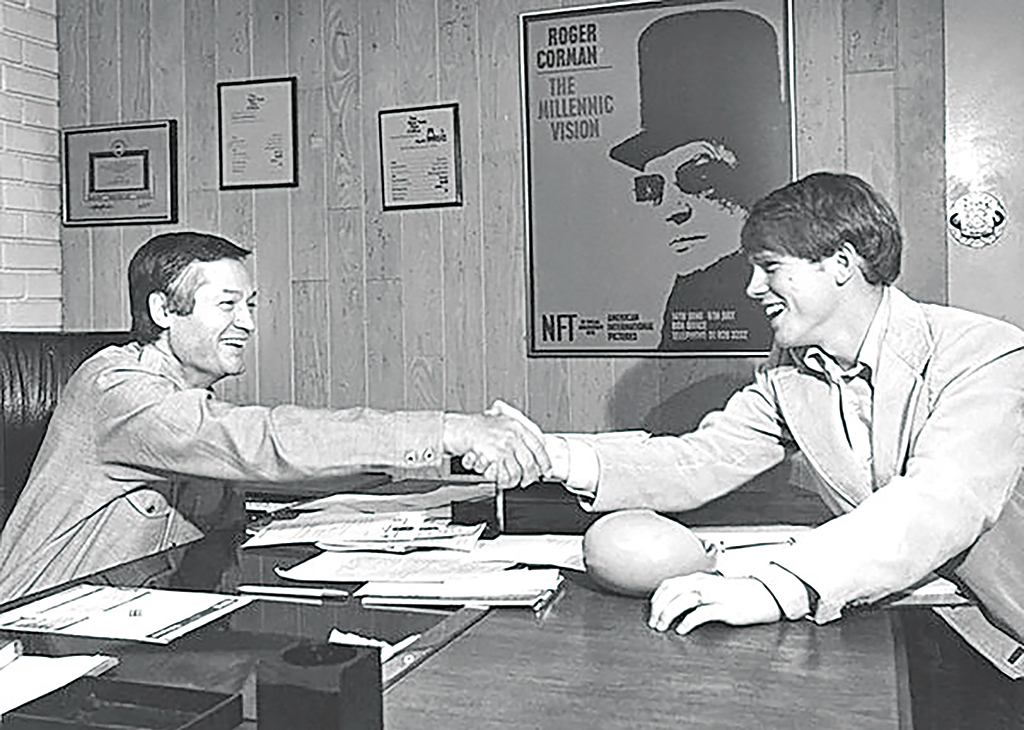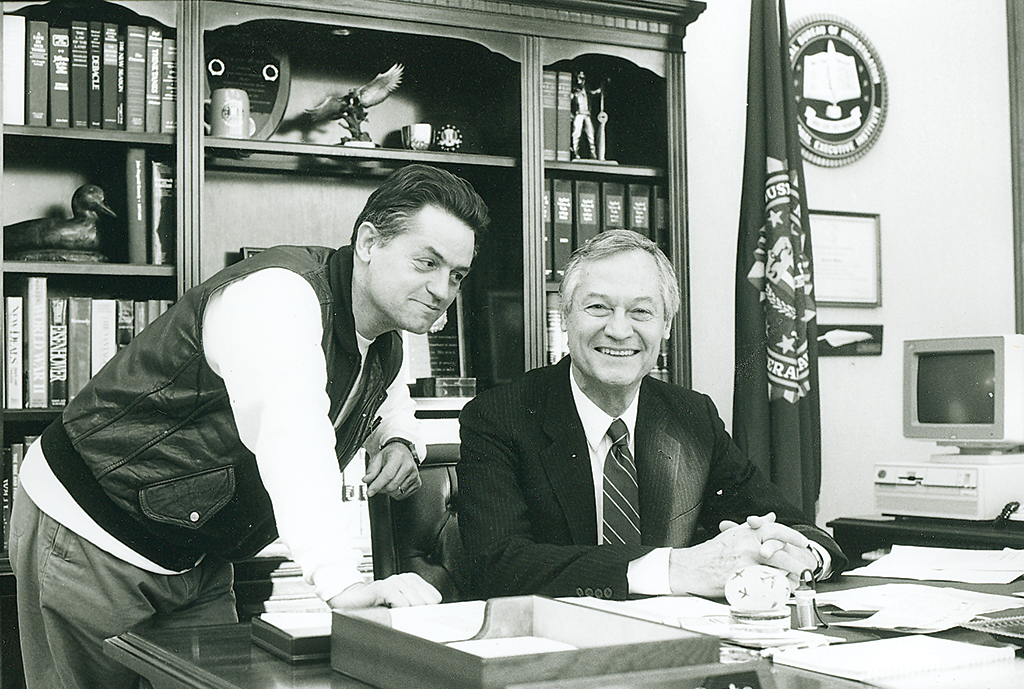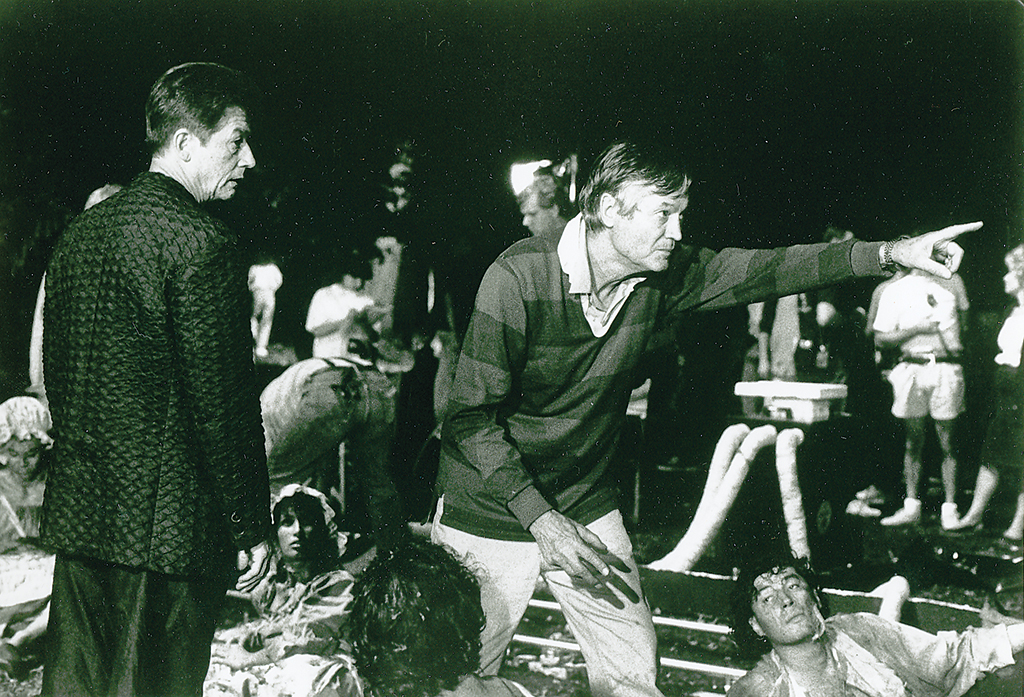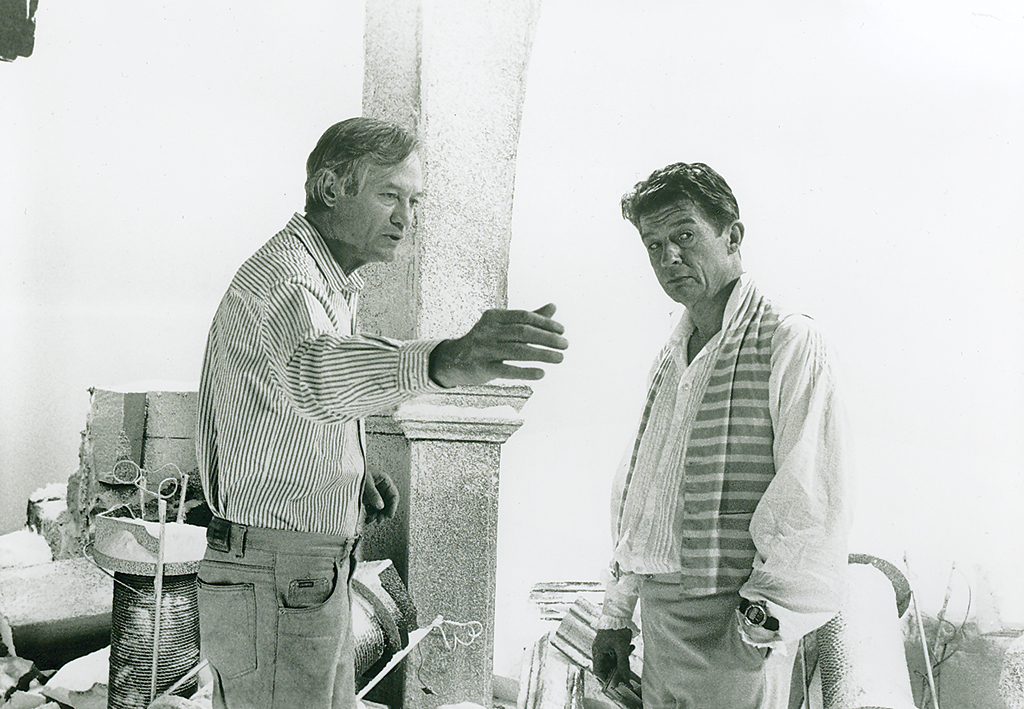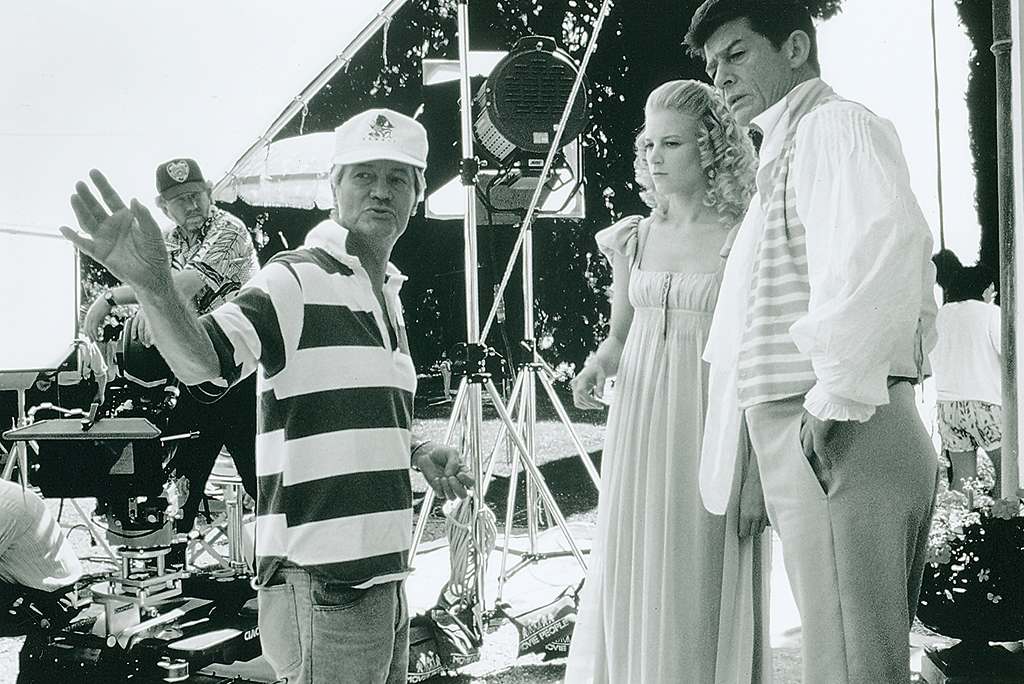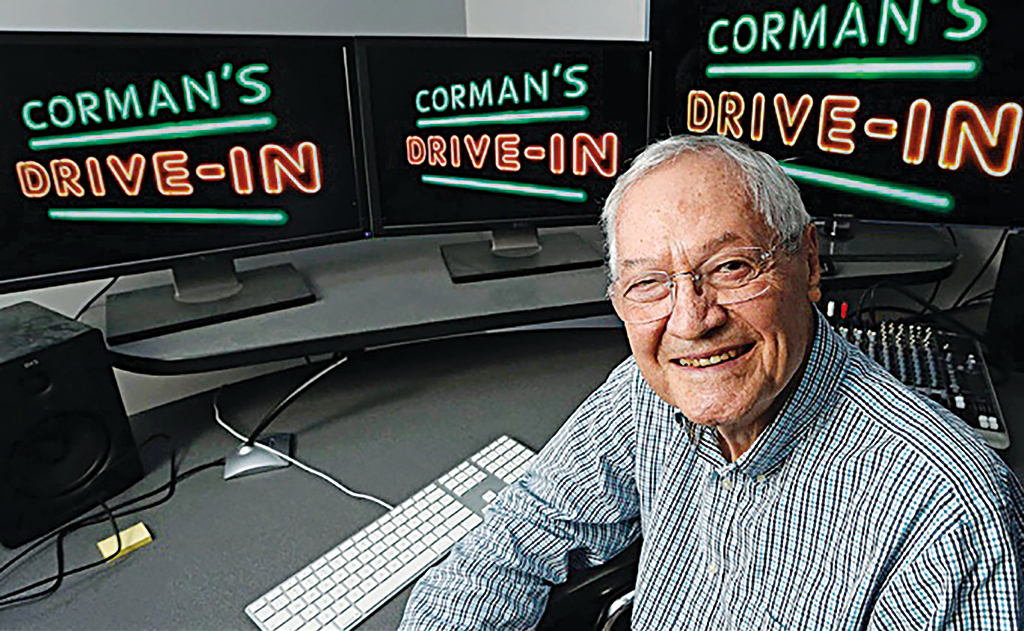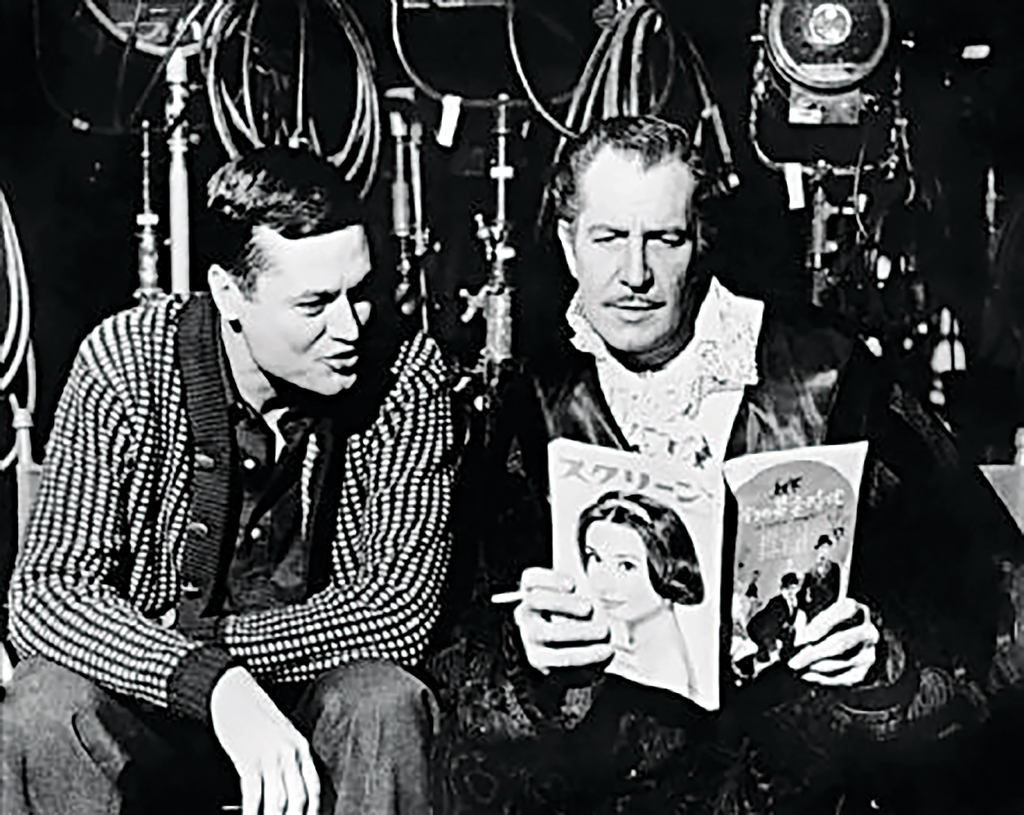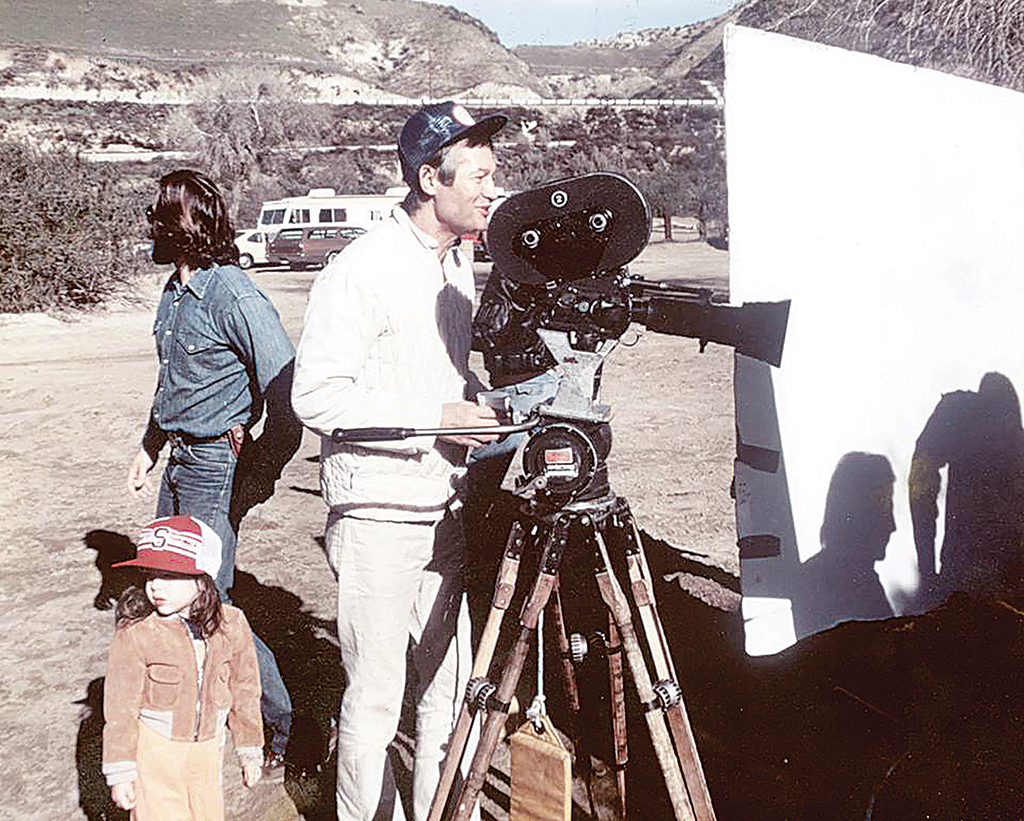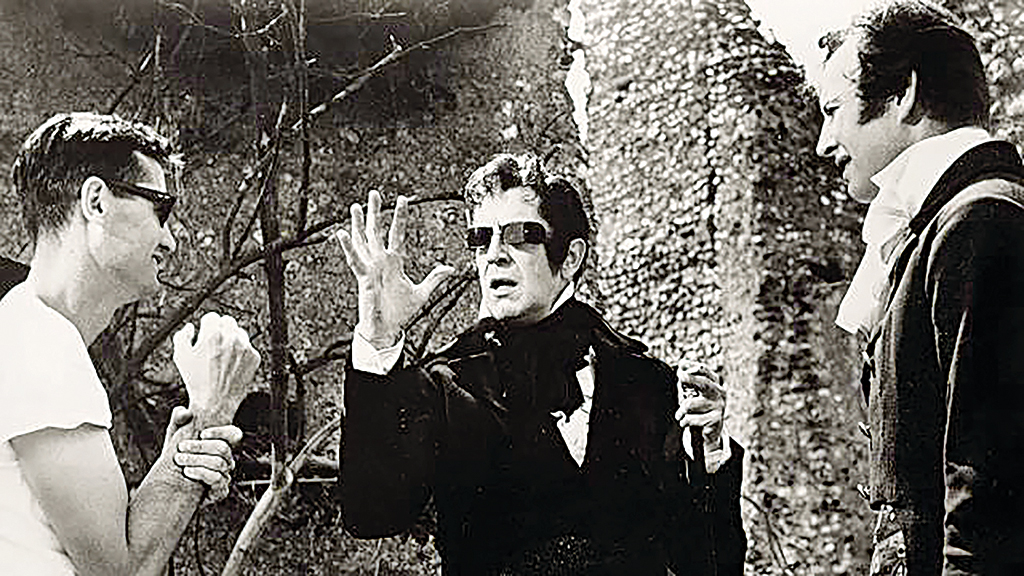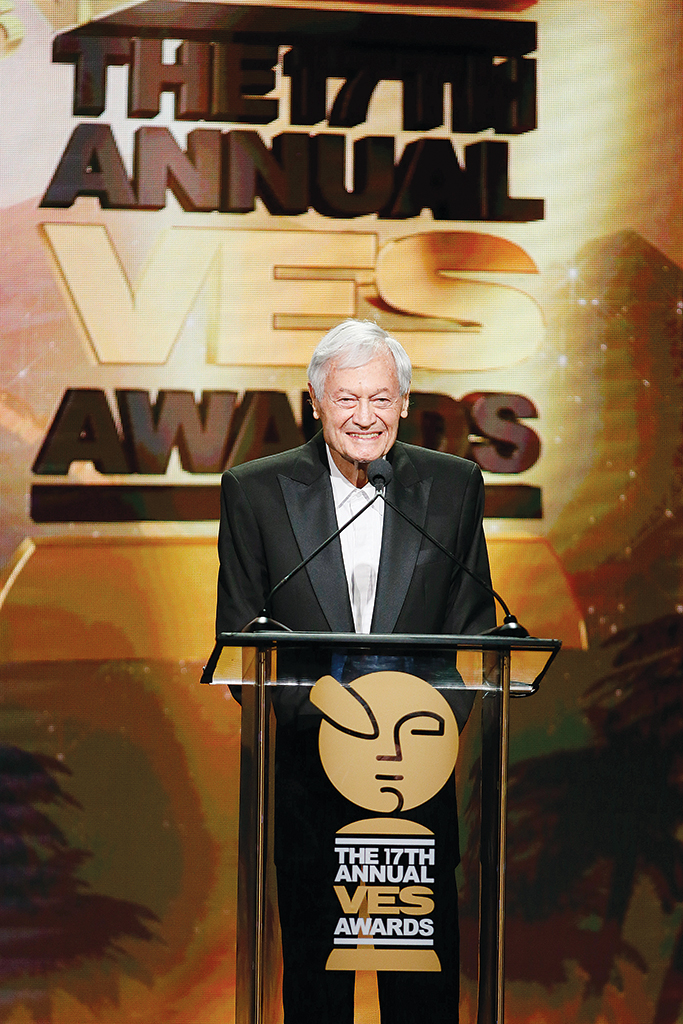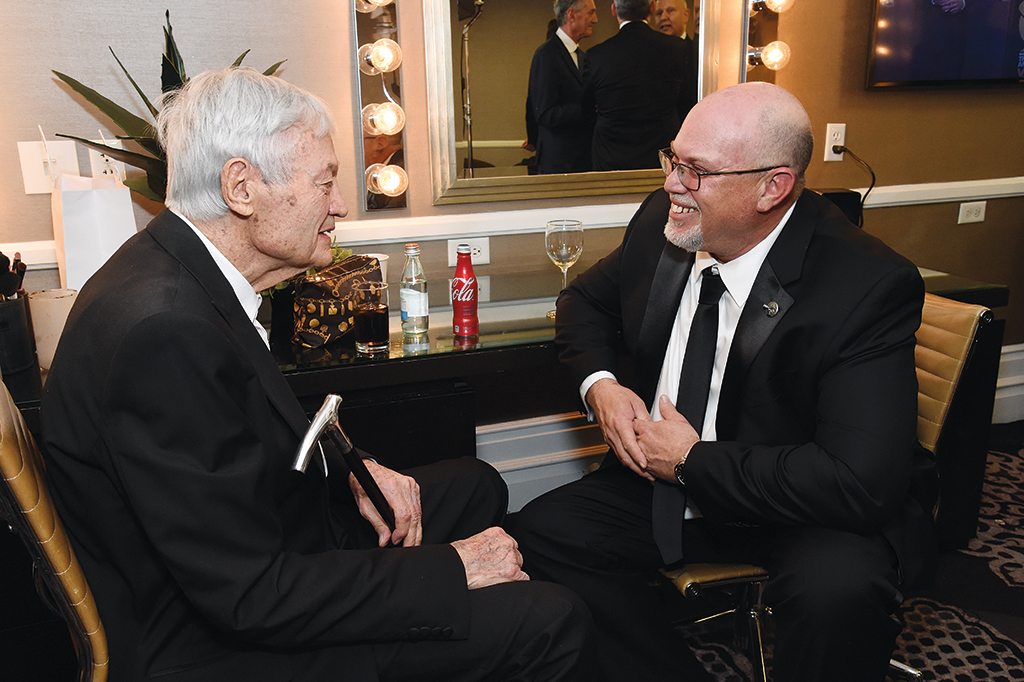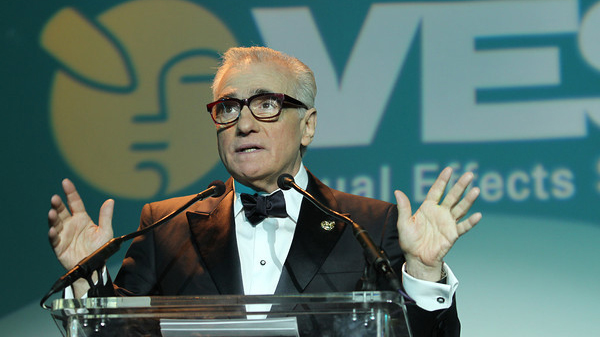By NAOMI GOLDMAN
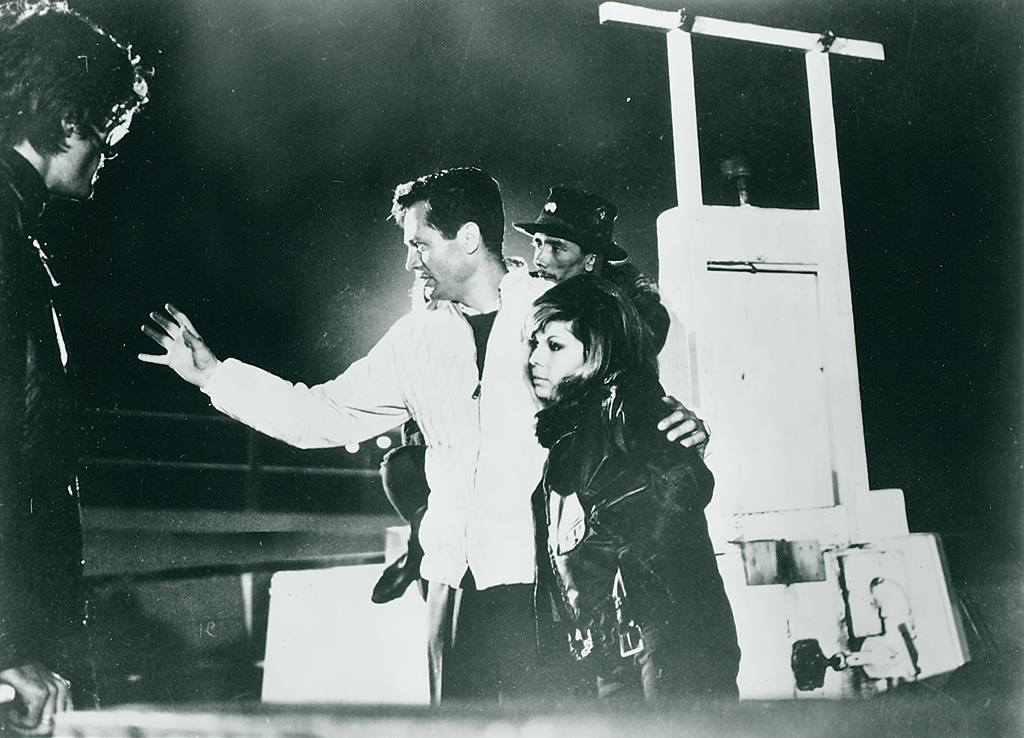
Corman directing Peter Fonda and Nancy Sinatra in The Wild Angels.
Legendary filmmaker Roger Corman is one of the most prolific producers and directors in the history of cinematic entertainment. A trailblazer in independent film, his creative work and output of drive-in classics has earned him monikers such as “The Pope of Pop Culture” and “The King of the B Movies.” At 92 years old and with a storied career spanning more than six decades, Corman has produced upwards of 350 feature films, with a stunning track record for turning a profit on all but a handful of his wildly inventive features.
Corman’s filmography boasts one inspired title after another, including The Beast with a Million Eyes, Slumber Party Massacre, The Devil on Horseback, Swamp Woman, Caged Heat, Nightcall Nurses, Frankenstein Unbound, and cult classics Death Race 2000 and The Little Shop of Horrors. His diverse slate also includes The House of Usher, part of the critically acclaimed adaptations of Edgar Allan Poe stories starring Vincent Price; The Intruder, a serious look at racial integration featuring William Shatner in his film debut; The Wild Angels, which kicked off the ‘biker movie’ cycle; and The Trip, which began the psychedelic film wave of the late 1960s.
In 1964, Corman became the youngest filmmaker to have a retrospective at the Cinémathèque Française. He has also been honored with retrospectives at the British Film Institute and the Museum of Modern Art. For his influence on modern American cinema and ability to nurture aspiring filmmakers, in 2009 he was bestowed with an Honorary Academy Award.


